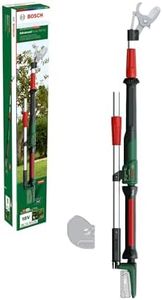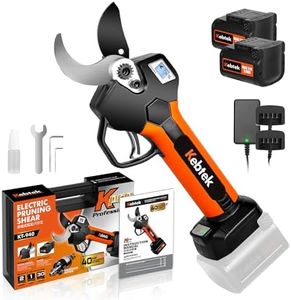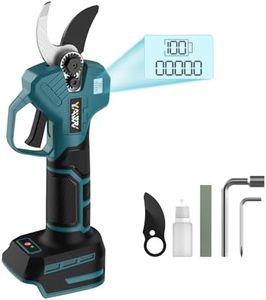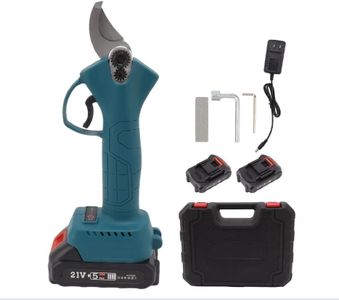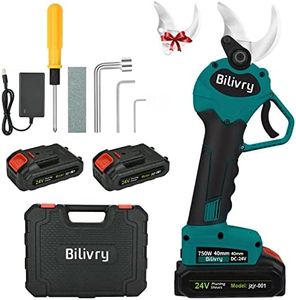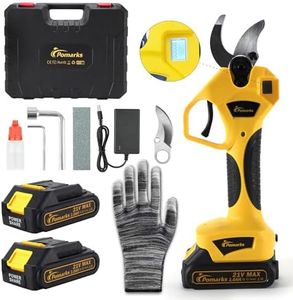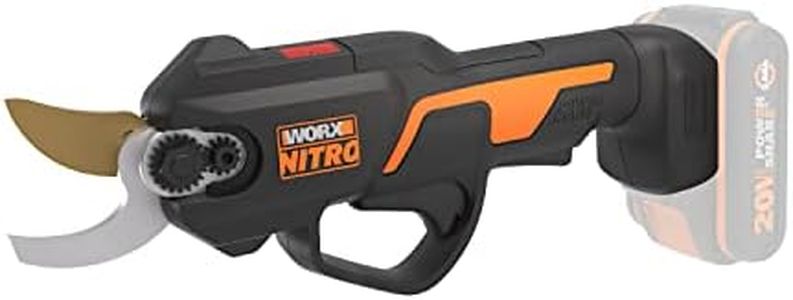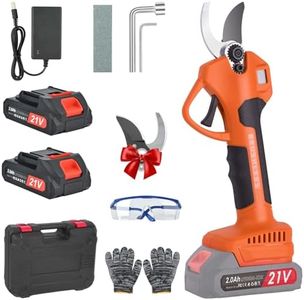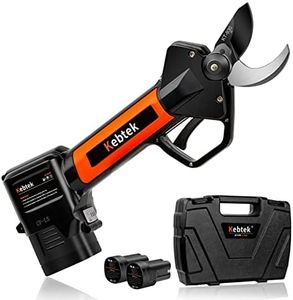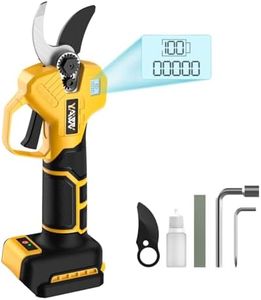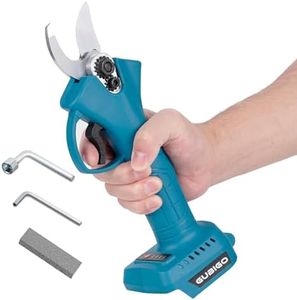We Use CookiesWe use cookies to enhance the security, performance,
functionality and for analytical and promotional activities. By continuing to browse this site you
are agreeing to our privacy policy
10 Best Electric Pruning Shears
From leading brands and best sellers available on the web.By clicking on a link to a third party's website, log data is shared with that third party.
Buying Guide for the Best Electric Pruning Shears
Choosing the right electric pruning shears can make yard work quicker, easier, and less tiring. These tools use a battery-powered motor to help cut through branches and stems, making them an excellent option for those who find manual shears challenging or want to tackle bigger jobs efficiently. When picking electric pruning shears, it’s essential to focus on features that match your gardening needs, such as the type and thickness of branches you usually cut, how comfortable and safe you need the tool to be, and the convenience of battery life and recharging.Cutting CapacityCutting capacity indicates the maximum thickness of branch the shears can cut, usually measured in millimeters or inches. This spec is important because it determines what size of branches you can trim. Lower cutting capacities (around 10-15mm or half an inch) are suitable for flower stems and thin twigs, making them good for light gardening or indoor plants. Mid-range cutting capacities (15-25mm or up to 1 inch) work well for most shrubs and common garden pruning, fitting typical home gardeners. High cutting capacities (above 25mm or over 1 inch) are better for those regularly dealing with thicker branches or more demanding yard work. To pick the right one, think about the largest base branches you typically cut in your garden and choose a model that handles just above that size.
Battery LifeBattery life tells you how long the shears can operate on a full charge, usually measured in hours or the number of cuts per charge. This is crucial because it determines how much work you can get done before stopping to recharge. Short battery life (under 1 hour or a few hundred cuts) can be enough for small gardens or quick tasks. Medium battery life (1-2 hours or several hundred to over a thousand cuts) fits most standard yards and routine pruning sessions. Extended battery life (over 2 hours or thousands of cuts) suits larger properties or if you prefer fewer interruptions while working. Choose according to the size and demands of your garden and how long your typical trimming session lasts.
WeightWeight refers to how heavy the electric shears are, usually listed in grams or pounds. This matters because heavier tools can tire out your hand and wrist over time, especially with longer use. Lighter shears (under 1 kg or around 2 lbs) are comfortable for most people and easier for those with less strength or who do a lot of overhead work. Mid-range weight (1-1.5 kg or 2-3 lbs) suits regular gardening without causing much fatigue. Heavier models (over 1.5 kg or 3 lbs) might be needed for extra durability or larger cutting capacities but may not be comfortable for long sessions. Consider how long you’ll be holding the tool and your physical comfort when choosing the weight.
Blade MaterialBlade material indicates what the cutting edge is made from, with impacts on durability and sharpness. Common materials include stainless steel, carbon steel, or coatings like titanium. Stainless steel resists rust well and is easy to clean, making it good for casual gardeners and humid environments. Carbon steel stays sharper for longer and cuts more easily, ideal for frequent and heavy-duty use but may require more cleaning to prevent rust. Special coatings may add durability or non-stick qualities. Pick according to how often you'll use the shears, how much maintenance you’re willing to do, and if you need extra durability.
Safety FeaturesSafety features help prevent accidents and injuries during use and storage. These may include locking switches, blade covers, and two-step triggers. Simple locking switches can prevent accidental activation, which helps if children or pets are nearby. Blade covers protect both you and the blades when not in use. Two-step triggers make sure the shears only work when intended. If you have any safety concerns or are new to electric garden tools, look for models with more built-in safeguards to give you extra peace of mind.
Ergonomic DesignErgonomic design covers features that make the shears more comfortable and easy to hold, such as handle shape, grip material, and balanced weight. Tools with a soft, non-slip grip and contoured handle are less likely to hurt your hand or slip while you work, especially during longer periods. Designs that balance the battery and cutting end can make the tool feel lighter and more maneuverable. If you have smaller hands, arthritis, or just want a pleasant pruning experience, choose models that highlight ergonomic comfort.
